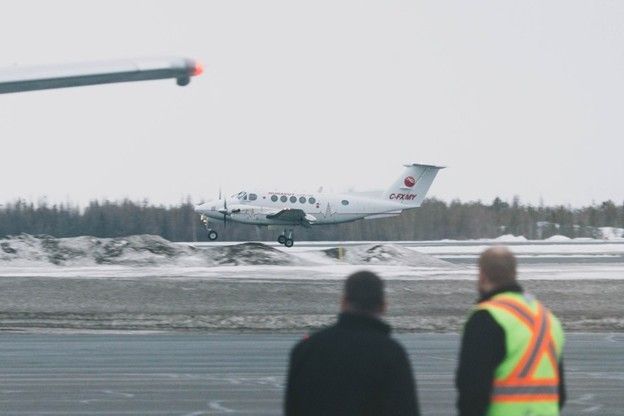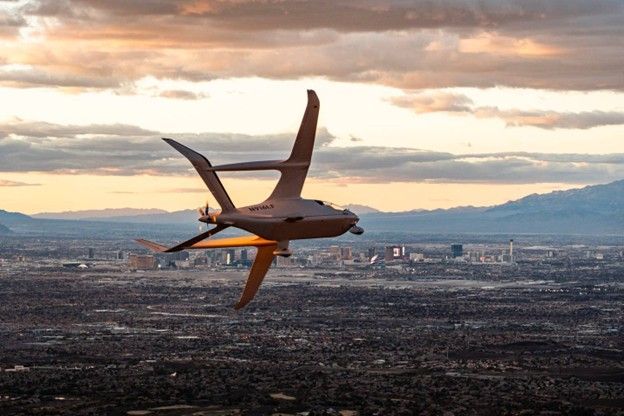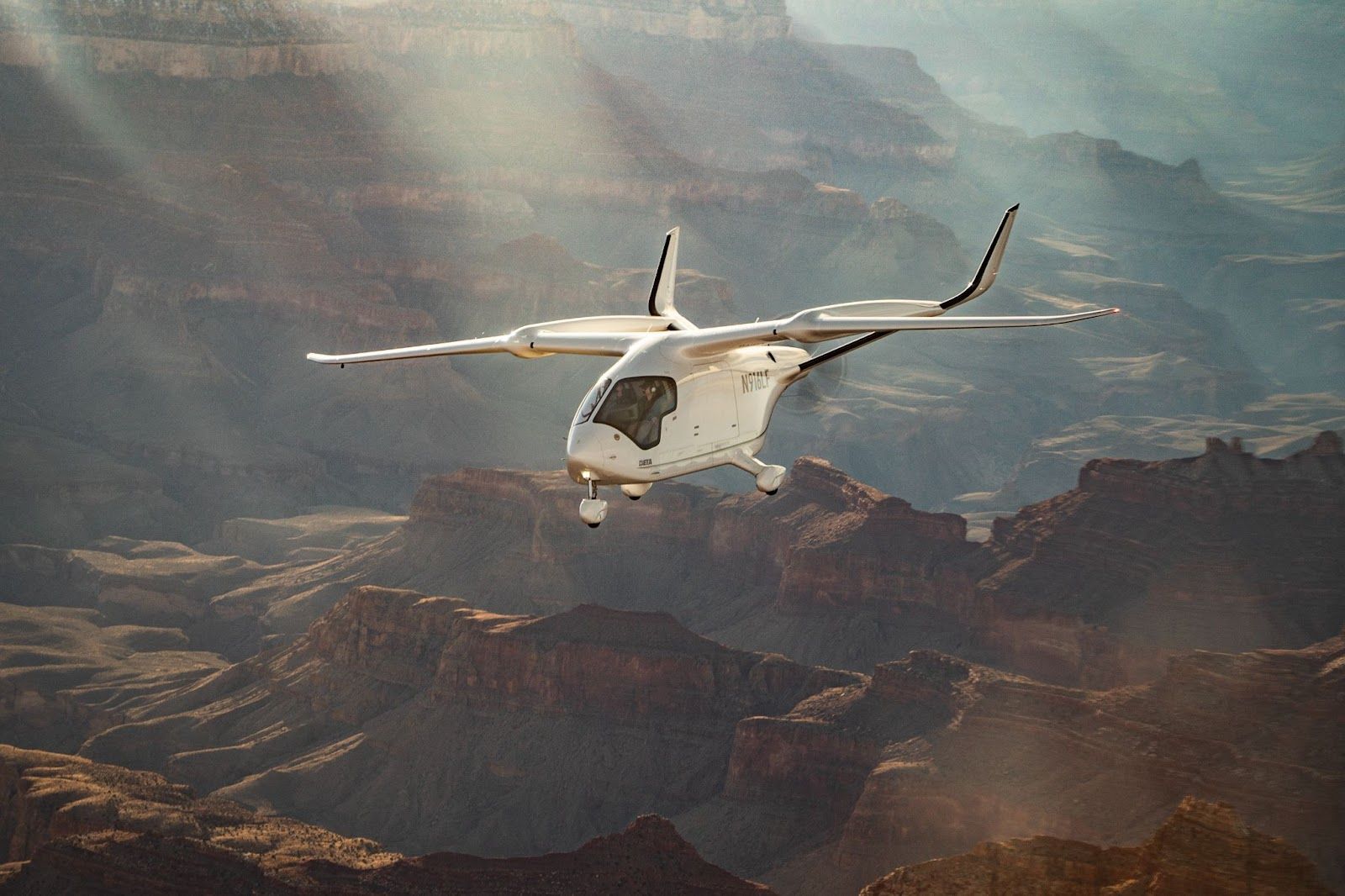ARFF Daily News
Published on:
Tuesday the 8th of April, 2025
Plane skids off runway at Oregon airport, crashes into bay
By Patrick Reilly
Five people were hospitalized after a small plane skidded off the runway at an Oregon airport and crashed into the water Monday morning, officials said.
The private plane sped off the tarmac at the Southwest Oregon Regional Airport in North Bend around 6:12 a.m. and ended up about 100 feet from shore in Coos Bay, an airport spokesperson told the Register Guard.
All four passengers and a crew member were rescued and rushed to an area hospital in unknown conditions.
Emergency response teams, including the Aircraft Rescue and Firefighter Team, Coos Bay and North Bend Fire Departments, North Bend Police Department, and the Coos County Sheriff’s Office, helped retrieve the aircraft.
Commercial air traffic on the airport’s main runway was shut down as authorities responded to the scene.
The cause of the crash remains under investigation.
https://nypost.com/2025/04/07/us-news/plane-skids-off-runway-at-oregon-airport-crashes-into-bay/


Aircraft makes Yellowknife emergency landing after nose gear fault
Ollie Williams
A small plane made an emergency landing at Yellowknife Airport on Monday evening after its front landing gear malfunctioned.
The Beechcraft King Air 200 – registration C-FXMY, operated by Keewatin Air – landed at around 7:45pm with fire and ambulance crews in attendance on the ground.
The flight had earlier circled outside Yellowknife for some time as the crew worked to resolve the issue.
In the event, photos showed the aircraft landing with what looked to be partially deployed nose gear.
By the time the plane came to rest, that gear appeared to have collapsed. The aircraft looked to be otherwise intact as emergency vehicles arrived at the scene.
“After bringing the aircraft to a controlled stop crew were able to safely exit, and no injuries are reported,” Keewatin Air president Ryan DeGroot told Cabin Radio by email.
“No passengers were on board the aircraft at the time of the incident.”
DeGroot confirmed the front landing gear had not functioned properly.
Keewatin Air uses King Air 200s like the one involved in Monday’s incident for air ambulance flights.
The impact on Yellowknife Airport’s operations seemed minimal.
The airport has two runways. Inbound flights operated by Canadian North and Air Canada were seen using the other runway in the hour after the King Air’s landing.
Sarah Pruys contributed reporting.


Electric Aircraft Completes 6-Week, 22-State Cross-Country Journey
Beta’s CX300 flies from the manufacturer’s flight test center in New York to California and back again.
Jack Daleo
During its barnstorming, six-week tour of the U.S., Beta Technologies’ CX300 production-intent electric aircraft was greeted with wide eyes—both of excitement and confusion.
“That’s a pretty, uh, different looking aircraft there—what is that thing?” the pilot of a Cessna 177 Cardinal asked Beta test pilot Chris Caputo during an in-air meetup in Utah.
“That thing would be called a Beta Technologies CX300 all-electric conventional takeoff and landing aircraft,” Caputo replied. “Be on the look out, you’re going to see a lot more of them.”
The aircraft—tail number N916LF, the first to be rolled off Beta’s scaled production line in Burlington, Vermont last year—recently returned to Plattsburgh International Airport (KPBG) after visiting more than 20 states and 82 municipal, state, and military airfields. The journey took the CX300 from Plattsburgh to Santa Monica, California, and back, flying over the Hollywood sign in Los Angeles, the mountainous Continental Divide, Midtown Manhattan, and other iconic landmarks.
The aircraft completed up to four flights per day, Beta said. It is designed for a pilot and up to five passengers, with a top cruise speed of 135 knots and demonstrated range of 336 nm, per the company's website. Beta claims the CX300 will produce 75 percent less emissions than a Cessna 208 Caravan at a fraction of the energy cost per hour.
“Seeing some iconic American scenes like the Grand Canyon from the cockpit was truly special,” Beta test pilot Nate Dubie, who along with Caputo and test pilot Noah Ranallo flew the aircraft in shifts, said in a statement. “But just as exciting was the enthusiasm from so many communities across the country who wanted to learn about this aircraft and the technology behind it.”
The trip was more than a public relations exercise, though. N916LF flew in VFR, IFR, day, and night conditions through snowstorms and scorching heat—an impressive validation of its systems considering Beta registered the model with the FAA less than six months ago.
Along the way, the aircraft used Beta’s network of electric chargers to juice up, proving it is possible to fly an electric aircraft from coast-to-coast. It even demonstrated routes that could be operational ahead of the 2034 Winter Olympic Games in Salt Lake City, which Beta and its partners and Utah plan to use as a showcase for the technology.
“This trip was a great way to put the aircraft and infrastructure through their paces ahead of delivering to customers this year,” said Dubie.
The model flew under Part 23 rules and a special airworthiness certificate from the FAA obtained after 50 hours of flight testing, Beta said.
I’ve Been Everywhere
The first half of the CX300’s journey, which the firm dubbed the “Beta Barnstorm,” spanned 22 days, 20 flight legs, more than 3,000 nm, and 11 states.
N916LF lifted off from Plattsburgh on February 7, stopping at airports in Glens Falls, Rome, Rochester, and Jamestown in New York while battling frigid weather. Those conditions snowballed into a blizzard by the time it reached Akron and Cincinnati in Ohio, continuing as it traveled south through Indiana, Arkansas, Missouri, and Oklahoma.
The snow was soon replaced by scorching desert heat as the aircraft flew through Texas, New Mexico, and Arizona, making stops in Amarillo, Albuquerque, Gallup, and Winslow. It landed at Santa Monica Municipal Airport (KSMO) on March 1, completing the coast-to-coast trip.
Nine days later, N916LF arrived at Salt Lake City International Airport (KSLC) for the first of six public flight demonstrations in Utah, where Beta is working with the state and partner 47G to introduce advanced air mobility (AAM) routes and charging sites. It flew more than 304 nm across the state, demonstrating potential cargo and passenger routes.
Stops included Heber, which Beta described as a “future charging site and transit hub,” and Ogden, which it said will have a “major role in future Olympic operations.” Nearly 1,000 spectators attended the flights, including civilians and state officials.
“There’s an opportunity ahead of the Olympics for Utah to lead the nation in [AAM]. To be put on the map in a whole new way,” Aaron Starks, president and CEO of 47G, said in a statement.
While in Salt Lake City, the CX300 took part in an operational demonstration with Beta customer UPS Flight Forward, which in 2021 signed a deal to purchase up to 150 electric vertical takeoff and landing (eVTOL) Alia aircraft. Beta is developing cargo and passenger versions of both the CX300 and Alia, scheduled to enter service this year and next, respectively. UPS personnel loaded and unloaded the aircraft and simulated a feeder route.
Before arriving back in Plattsburgh, N916LF achieved one more feat: an IFR flight into Hartsfield-Jackson Atlanta International Airport (KATL), the busiest airport in the world.
Setting the Stage
The CX300’s extraordinary journey was a sight to behold. It was also a preview of what’s to come.
As soon as this year, Beta plans to kick off customer deliveries and certify the model for commercial service. It claims to have a backlog of 600 aircraft. UPS Flight Forward, United Therapeutics, and other cargo and medical delivery providers will likely get a crack at the CX300 before passenger operators.
During the aircraft’s cross-country journey, Beta said it introduced the technology to nearly 150 FAA personnel. The manufacturer last month also flew a second production-intent CX300 that will conduct flight testing in Norway for customer Bristow Group, which specializes in search and rescue and offshore operations.
Once the FAA certifies the model, Beta’s network of chargers could allow it to launch service nationwide. The company has agreements with FBO networks Atlantic Aviation and Signature Aviation to install chargers in their terminals. Competing eVTOL manufacturers Archer Aviation and Vertical Aerospace have even purchased them for their own designs.
Having accrued extensive real-world action, Beta’s CX300 could be one of the first crewed electric aircraft authorized by the FAA to carry passengers or cargo. The U.S. is aiming to keep pace with China, which last month certified a four-seat electric model for commercial service. This week, it authorized EHang’s self-flying electric model to carry humans.



NTSB Final Report: Brown Benjamin C Challenger II
Loss Of Engine Power Due To A Loss Of Compression In One Of The Engine’S Two Cylinders
Location: Moultonborough, New Hampshire Accident Number: ERA23LA360
Date & Time: September 1, 2023, 09:10 Local Registration: N2480Y
Aircraft: Brown Benjamin C Challenger II Aircraft Damage: Substantial
Defining Event: Loss of engine power (total) Injuries: 1 None
Flight Conducted Under: Part 91: General aviation - Personal
Analysis: The pilot reported that a few minutes after takeoff, during the initial climb, the airplane’s two-stroke engine began to slowly lose power. The pilot attempted to restart the engine but was unsuccessful. He elected to make a forced landing in small field, resulting in substantial damage to both of the airplane’s wing struts.
Postaccident examination of the engine revealed that one of the engine’s two cylinders had no compression. It is likely that this lack of compression resulted in the loss of engine power reported by the pilot during the accident flight. Additionally, during the examination, a zip tie was found secured around the fuel line that provided fuel for that cylinder in a way that reduced its interior diameter. It is possible that the reduced diameter of the fuel line could have resulted in less fuel reaching the cylinder during high power operation, and that it was operating in an excessively lean condition. Operation in this state could have damaged the cylinder and resulted in the lack of compression observed during the engine examination. It could not be determined when the zip-tie was installed on the fuel line, though entries in the airplane’s maintenance logs indicated that its last condition inspection was completed about three months before the accident.
Probable Cause and Findings: The National Transportation Safety Board determines the probable cause(s) of this accident to be -- A loss of engine power due to a loss of compression in one of the engine’s two cylinders.
FMI: www.ntsb.gov

Today in History
71 Years ago today: On 8 April 1954 Trans-Canada Air Lines flight 9, a Canadair C-4 North Star, crashed following a mid-air collision with an RCAF Harvard near Moose Jaw, SK, Canada, killing all 35 occupants, the pilot of the Harvard and one person on the ground.
Date: Thursday 8 April 1954
Time: 10:03
Type: Canadair C-4-1 North Star
Owner/operator: Trans-Canada Air Lines - TCAL
Registration: CF-TFW
MSN: 150
Engine model: Rolls-Royce Merlin 622
Fatalities: Fatalities: 35 / Occupants: 35
Other fatalities: 2
Aircraft damage: Destroyed, written off
Category: Accident
Location: Moose Jaw, SK - Canada
Phase: On the way
Nature: Passenger - Scheduled
Departure airport: Winnipeg International Airport, MB (YWG/CYWG)
Destination airport: Calgary Municipal Airport, AB (YYC/CYYC)
Confidence Rating: Accident investigation report completed and information captured
Narrative:
Trans-Canada Air Lines flight 9, a Canadair C-4 North Star, crashed following a mid-air collision with an RCAF Harvard near Moose Jaw, SK, Canada, killing all 35 occupants, the pilot of the Harvard and one person on the ground.
The Canadair C-4 was on a flight to Vancouver and had been cleared on an IFR flightplan flying at 6000 feet on Green Airway 1 between Winnipeg and Calgary, which was the first intermediate stop.
At 09:57 an RCAF Harvard Mk. II took off from RCAF Station Moose Jaw for a navigation cross-country exercise. The Harvard was climbing to 9000 feet, crossed the Airway at 6000 feet and collided with the C-4. A large portion of the wreckage fell on a house which was destroyed by fire, killing the only occupant. The Harvard pilot and all 35 occupants of the C-4 where also killed.
PROBABLE CAUSE: "1) Failure on the part of the pilots of both aircraft to maintain a proper lookout, the onus of responsibility for keeping out of the way being with the Harvard aircraft as it had the other on its own right side. 2) The Harvard aircraft in crossing the airway climbed through altitudes normally used by aircraft flying along the airway. 3) The Board up to the present has been unable to determine whether the window post on the left side of the Canadair C4-1 aircraft hid the Harvard aircraft from view, but there are indications that this was possible."

